The Difference Between Streetball and The NBA
Introduction
Neighborhoods throughout America are littered with stories of phenomenal
streetballers who could have, and perhaps should have, made it to the ultimate
professional league basketball has to offer; the National Basketball Association
(NBA). Despite their respective talent, they never made it to the professional
level.
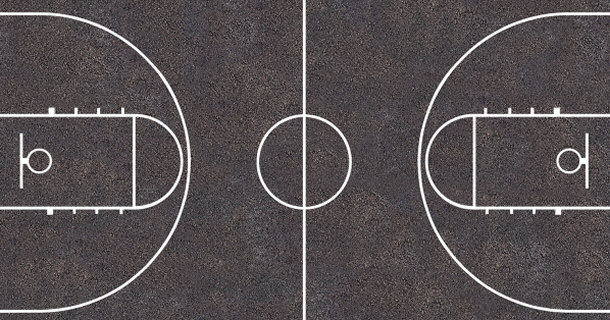
There are a
number of possible explanations for why most streetballers haven't been able to
make the transition, given the history of the game.
History
There has always been a rivalry between pro-ballers and streetballers, which
culminated in 1967 with the formation of the American Basketball Association
(ABA). The league was created with the express purpose of offering basketball
fans and players alike an alternative to the mainstream NBA. Specifically, while
the NBA focused primarily on the sound but often dull fundamentals of the game,
and the ABA became a professional playground for streetballers to display both their
acrobatic and flamboyant skills.
The ABA folded in 1976, though not before producing and nurturing a number of
young superstars who would join the NBA, when the ABA merged with the league.
Only four of the original ABA teams survived the transition and became official
teams in the NBA.
Despite the demise of the ABA, streetballers and their unique style of play
still had a place in other similar mediums, such as the Harlem Globetrotters – a
team of spectacular and versatile playmakers and acrobatic stunt performers.
The Harlem Globetrotters
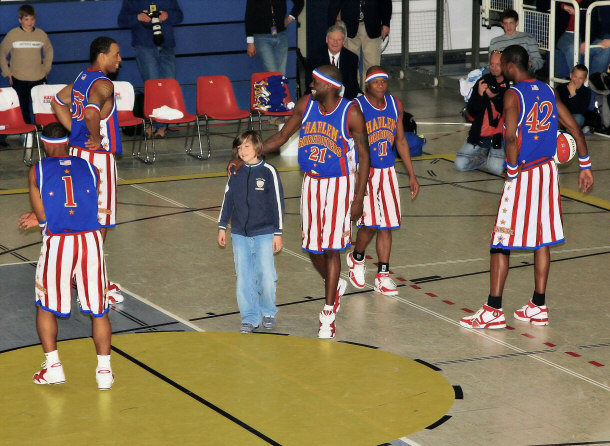
In later years, streetballers would get the opportunity to display their
skills in another organization called AND1. AND1 players would travel North
America and across the
world, competing against local streetball talent and occasionally accumulating
players along the way.
Streetballers in the NBA
Given the history and even the current climate regarding the conflict between
streetballers and the NBA, it’s ironic that much of the NBA highlights that get
broadcast to promote the league are athletic moves that come more from street
ball than traditional play. Such moves aren’t performed by actual streetballers though. In fact, very few streetballers have ever even so much as
gotten the chance to potentially play in the NBA.
The NBA's Development League May Be the Only Chance a Streetballer
May Have
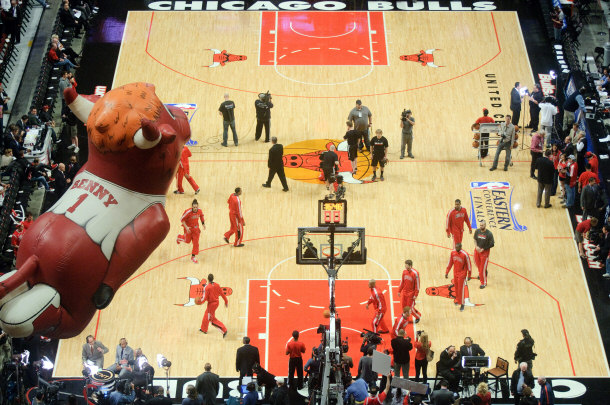
By Eric Kilby (//www.flickr.com/photos/ekilby/5813007135/) [CC-BY-SA-2.0],
via Wikimedia Commons
Rarely are streetballers ever offered a ten day contract, which allows them
the opportunity to show their skills over the course of around five NBA games.
Nor are many of them ever involved in the NBA summer league, where player from
the throughout the United States and internationally are invited to participate.
This is an attempt for NBA teams to explore potential talent that may be out
there, and to fill the last
available spots on their respective rosters.
|
Raefer Alston:
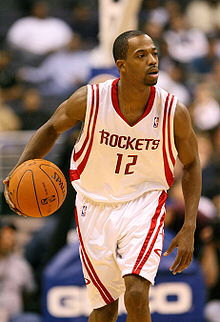
|
Raefer Alston (1998 – 2010), or “Skip-2-My-Lou” as he’s known by his streetball name (you’re not a streetballer unless you have a nickname), is the
player with the highest profile to ever make it from the streets to the NBA in
recent years.
He took the only real window of opportunity available to streetballers, which
was going through the NBA’s Development League. This league is a slightly more
open-minded than the NBA as far as recruiting streetballers for an
opportunity to make it into the league.
While in the NBA, Alston carved out a reputation as a solid, borderline
starter and leader in the league. His most significant performance was in
2007-08 season when the Houston Rockets, riddled with injuries to key players
such as Yao Ming (2002 – 2011) and Tracy McGrady (1997 – present), leaned on
Alston to lead the team. He subsequently helped the franchise break a
longstanding record with a 22-game winning streak.
Alston's key role in the Rocket’s surprise and remarkable winning streak,
allowed for a legacy much greater than his in-game statistics accounted for.
Alston paved a way for young streetballers of an entire generation. Alston highlighted
that as difficult as it can be (and often is) for streetballers to break into
the world of NBA basketball, it is possible to not only make it to the NBA, and
even possible to
thrive there with some hard work. With that, he's given hope and inspiration to make
it to the "big league" when there was little or none prior to his
success story.
Julius "Dr. J" Erving
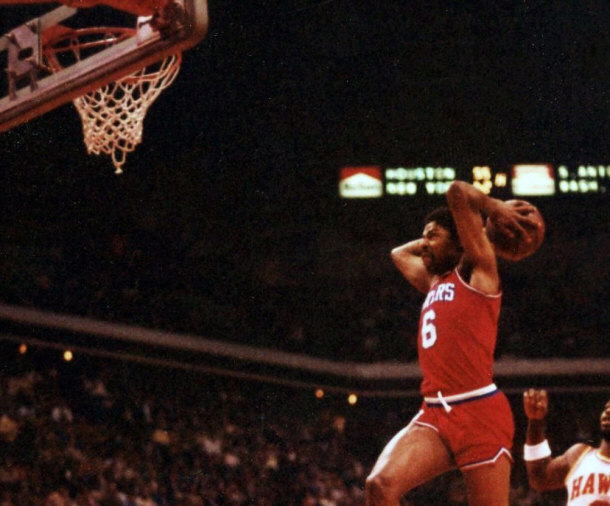
While Alston was the highest profile-player with streetball origins in the
modern league, there were many more that had come before him. The mix of streetball and the NBA acrobatics are well ingrained in the history of the
league, with many of the earlier and historical great players from the formative
years of the game also making the transition from the streets to the NBA. Such
players include Wilt “The Stilt” Chamberlain, Connie “The Hawk” Hawkins, Earl
“The Pearl” Monroe and Julius "Dr. J” Erving.
Dribble-Moves
Perhaps the greatest irony of the division that exists between streetball and
the NBA, is that the two are inextricably linked. From the very beginning, the
NBA was always about the fundamentals of the game of basketball, with the league
viewing the sport as a science more so than anything else. Despite this, streetball would have the greatest influence on the most fundamental of aspects
of the game – specifically ball-handling.
A Harlem Globetrotter Showing Off His Dribbling Skills
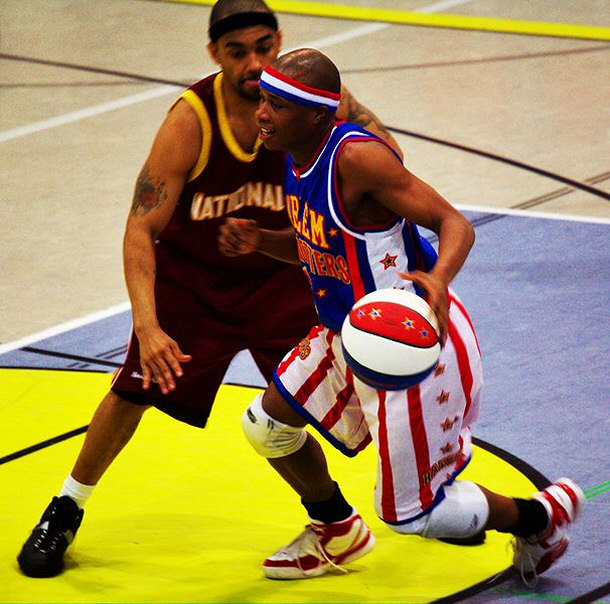
By User.MatthiasKabel (Own worl) [GFDL, CC-BY-SA-3.0 or CC-BY-SA-2.5-2.0-1.0],
via Wikimedia Commons
If one goes back and watches the highlight footage of the original games in
the NBA and sees how the original players bounced the ball, it’s weird. They
would be bouncing the ball and doing so in such a awkward fashion that it was
quite comical, not to mention inefficient and ineffective, as the ball would
easily be stolen. With streetballers and League players alike, the athleticism
of the players far exceeded the dribbling technique of the time. Creative
players like those from streetball began to both dribble the ball at a lower
level, and also other ball handling skills, such as, dribbling the ball between
the legs or behind the back; all things we consider standard in today's game.
The most influential and impactful streetball moves on the league would
arguably be the ankle-breaker or cross-over moves. This is when a player
dribbles the ball from one hand to another with such speed that the move
disorients their opponent. Successful execution causes the opponent to lose
their footing and fall to the ground. In some cases the moves can even cause
injury to the opponent’s ankles, hence the name.
Anatomy of the Cross-Over
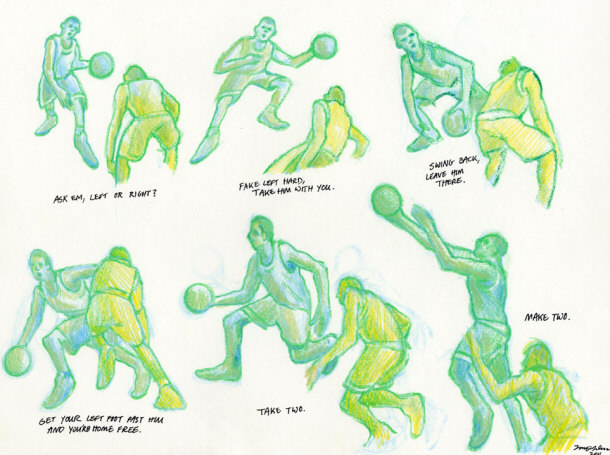
It’s highly unlikely that a single player (or at least American-raised
player) has ever made it to the NBA, without setting foot on a street ball
court, thus many NBA players with sound fundamental talent, also possess solid
streetball skills. Tim Hardaway (1989 – 2003), known for his “killer cross-over”
had one of the most affective dribble-moves in NBA history. Stephon “Starbury”
Marbury was another NBA player, whose experience of streetball in his early
years, helped him make a name for himself with elaborate dribble moves.
Stephon "Starbury" Marbury
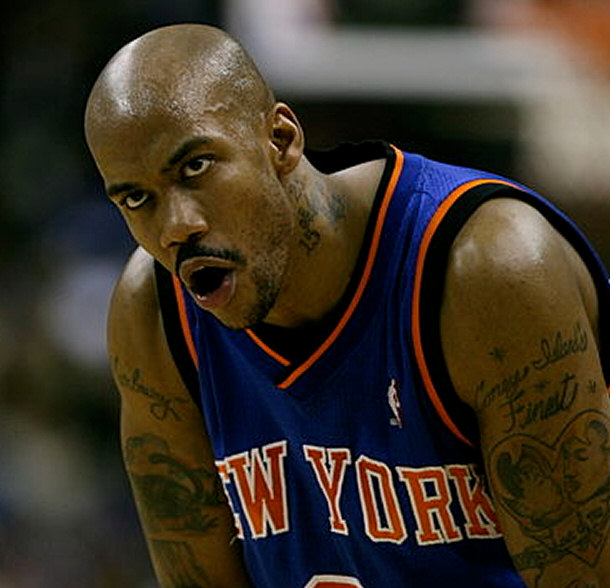
By Keith Allison [CC-BY-SA-2.0],
via Wikimedia Commons
Passes
Ironically, the first player to perform plays that are today synonymous with
streetball was Bob Cousy (1950 – 1963, 1969 – 1970). He was the first to perform
behind-the-back dribble-moves and elaborate passes. While elaborate passes
originated with the NBA's Cousy, it would be streetball that would take the
moves and perfect them.
|
Larry Bird:
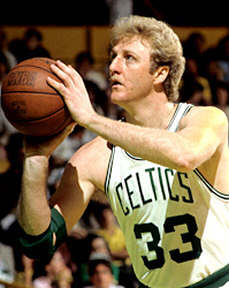
|
In later years, with the passing ability of players such as Pete “Pistol”
Maravich (1970 – 1980), players who had no significant (if any) association with
streetball would come to add to the elaborate style of play. Perhaps none more
so that than the NBA legend Earvin “Magic” Johnson (1979 – 1991, 1996), who
would perfect the no-look pass, along with making some of the greatest (and
seemingly impossible) passes ever seen on a basketball court. Rival, Larry “Legend” Bird
(1979 – 1992), would also add to the passing aspect of the game with his uncanny
ability to sense where everybody was on the floor, and finding them with his
laser-sharp passes.
The tradition of ball-distributing players who could not only throw accurate
passes but accurate and elaborate passes, would be continued with Jason Kidd
(1994 – 2013). His efficiency as a play-maker and ball distributor led to
numerous players desiring to play with him. Steve Nash is another great passer who would manage to make
the seemingly impossible, possible.
Fantastic Passer Gary Payton
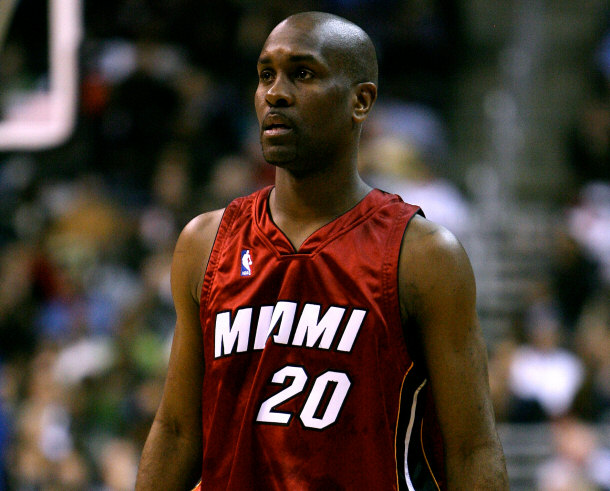
Gary “the Glove” Payton, mixed a
combination of fundamental play with streetball toughness, exhibiting phenomenal
passing skills. In many case this was
along with his phenomenally athletic teammate, Shawn Kemp (1989 – 2003) who
often punctuated Payton’s remarkable passing abilities with an emphatic,
spectacular ferocious dunk.
Dunks
The slam dunk is as old as the game of basketball itself, but the two didn’t
always go hand-in-hand. In the early years of the game, particularly at the
professional level, players rarely dunked. The move was considered disrespectful
to the opponent and if any player did dunk, they were likely to face
repercussions from their opponent who might of taken a cheap shot at the player while
they were still in the air.
The move only became somewhat common and acceptable when players like Elgin
Baylor (1958 – 1971) and Wilt “The Stilt/The Big Dipper” Chamberlain (1959 –
1973) joined the professional ranks and performed the move regularly.
Wilt "The Stilt" Chamberlain
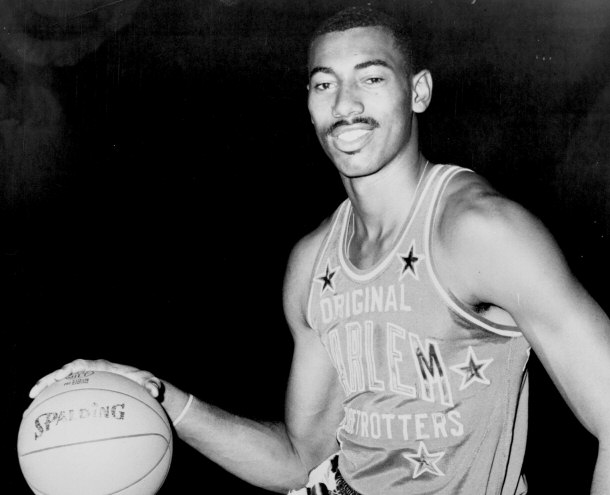
Today, the slam dunk is an icon of the game of basketball. However, it wasn’t
always considered a quintessential element of the game – at least not in the
NBA. The first dunk contest took place in 1976 as part of the ABA’s All-Star
game. Despite it’s popularity in the ABA and amongst streetballers, it didn’t
reappear in the NBA until the ABA and NBA merged in 1984.
It would seem that despite the popularity of the slam dunk contest, the NBA
were reluctant to embrace it due to the residual rivalry that existed between
the NBA and the streetball oriented ABA.
|
Vince Carter:
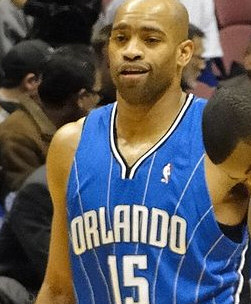
|
In the 2000 Slam Dunk Contest, contestant Vince Carter performed a multitude
of spectacular and elaborate dunks and re-established the iconic status of the
dunk in the league. While certain elements of his dunks were amalgamation of
earlier dunks performed by NBA dunk legends such as Michael Jordan (1984 – 1993,
1995 – 1998, 2001 – 2003) Dominique Wilkins (1982 – 1999), and Isaiah Rider
(1993 – 2001). Carter also performed a dunk were he jumped so high that he was
able to dunk his whole arm into the basket, leaving him hanging by his elbow.
Still, though elements of street ball in regards to dunks have emerged in the
NBA, the reality is that, quite simply, no-one in the NBA has been able to
replicate some of the most spectacular moves ever performed in street ball –
such as a 720 slam dunk – where a player spins around twice. While the 360 is a
common sight in the NBA – even within in-game play – no-one in the NBA has even
attempted a 720 dunk.
Offensive Fouls
Perhaps the most significant thing that sets the NBA apart from other
pro-leagues throughout the world is that there’s significantly less emphasis on
offensive fouls (that is, when a player with the ball makes contact with a
defender). The NBA did this in order to retain the aesthetic of the game with
spectacular highlight reel plays such as dunks, dribble-moves/ankle-breakers,
elaborate no-look passes, the origin of which are predominately, if not
entirely, rooted in streetball.
One the league’s newest superstars, Blake Griffin (2009 – present), is
notorious for committing offensive fouls that aren’t called, because the result
is almost always a spectacular slam dunk over an opponent that is then used in
various highlight reels to promote the game.
Blake Griffin
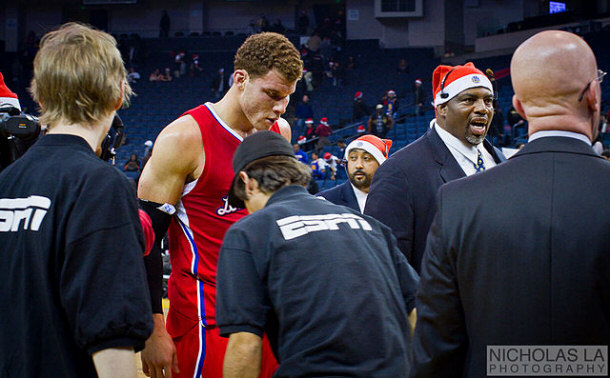
By nikk_la (Flickr: IMG_1952) [CC-BY-2.0],
via Wikimedia Commons
The result of this variation of rules that favor the athleticism of the game
over the laws of it, results in a faster-paced game that is more engaging for
the audience to watch. This sets the league apart from other international
leagues (hence why many NBA players initially struggle with the Olympics where
the rulings are based on international rules of play). This is yet another
element where, despite their differences, the NBA and streetball are very
similar.
Streetballers and Role Players
Like all sports, basketball is made up of players of varying degrees of
talent level. There are players who are superstars (often referred to as a
franchise player), star players, role players and bench warmers.
Superstars/franchise players, are individuals that a team can be built around
in hopes of winning a championship. These are the player you want the ball in
their hands in the dying seconds of a close and crucial game. Players like
Michael Jordan, Wilt Chamberlin, George Mikan (1946 – 1956), Kareem Abdul-Jabbar
(1969 – 1989), Larry Bird.
Michael Jordan During the Bull's First Run at a Title With Him

By Diegoestefano97 (Own work) [CC-BY-SA-3.0],
via Wikimedia Commons
Star players are often almost as good as a franchise player is, though
they’re missing something – the X-factor. That thing that sets franchise players
apart from star players apart. These players are essentially the sidekicks to
franchise players, and play a crucial role in the success of franchise players,
as no franchise player in the history of the league has ever won a championship
on their own – Michael Jordan was in the league for 5 years before he won his
first and that was only when he had star players, Scottie Pippen (1987 – 2008)
and Horace Grant (1987 – 2004). Arguably the greatest rebounder ever, Dennis
Rodman (1986 – 2006) would also help Jordan win the last 3 of his 6
championships.
Role players only really have one main responsibility when it comes to the
game, whether it comes to scoring, defense etc. But they’re still required to
have an adequate variety in regards to other skills. This is where the biggest
difference between pro-ballers and streetballers is evident.
Streetballers typically excel at one and only one aspect of the game of
basketball – usually, it’s in regards to dunking, ball-handling or passing –
which is why the most likely place where streetballers could potentially fit
into the NBA is as role players.
The problem is that most streetballers don’t have the fundamental skills in
regards to other aspects of the game. Many players have received a great deal of
attention for their incredible ability to dunk, though struggled in the NBA,
with it being their only significant talent – Harold Miner (1992 – 1996) Fred
Jones (2002 – 2011), James White (2006 – present). If that’s all they can do,
ultimately, they have little to contribute to a team because of their lack of
versatility.
James White
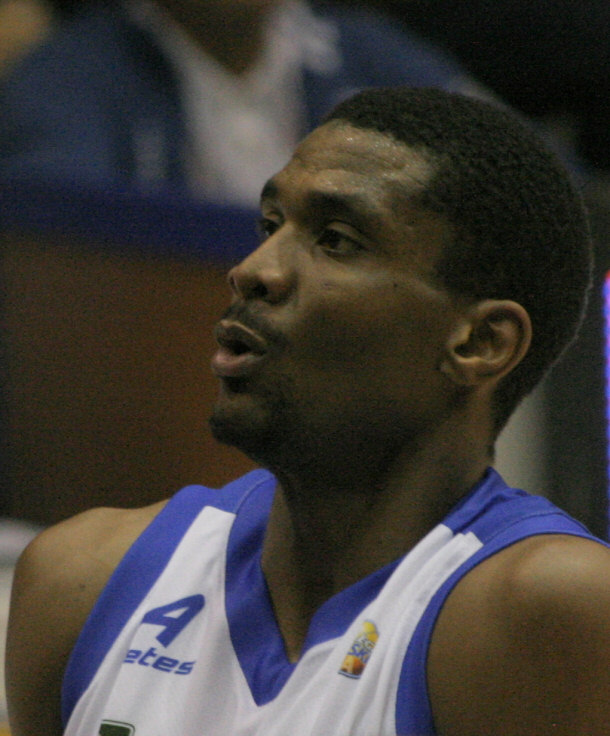
This is a fact that is often illustrated by NBA players themselves. Adam
Morrison was taken with the 3rd pick in the 2006 NBA Draft. He was expected to
be a star player if not a franchise player. He certainly seemed to have the
potential, especially during his time at College.
He was a great scorer, especially from long distance. The problem, though,
was that scoring (through jump shots) was all that he could do. He couldn’t
defend (at least not by NBA standards) which made him a liability on the
defensive end of the floor. Given that a player has to have adequate skills
across the board, he couldn’t make it in the NBA. Certainly, there are
exceptions. Players such as Eddie House and Mike Bibby, who were known for their
“instant offense” skills, but such exceptions are very rare.
This is a core problem for streetballers. While they’ll excel at one specific
aspect of the game (usually offensively, specifically scoring in the lane, close
to the basket) they will more often than not lack the defensive skills to
justify their place on a NBA roster. These roster spots usually end up going to
elder players with adequate skills who's profession experience puts them ahead
of many unproven project players.
Societal
There is a societal aspect to the separation of streetball and the NBA, with
the culmination of a number of cultural and systematic issues resulting in the
struggles streetballers face when it comes to making it to the NBA. Many
streetballers come from disenfranchised communities where systematic social
problems and cultural issues are major issues. Drug and alcohol abuse/addiction,
and street and domestic violence are issues streetballers often have had to
face.
Numerous players who made it into the NBA, do so by overcoming their roots,
though many more others fall victim to them. This was the case for arguably the
best streetballer of all time, Earl “The G.O.A.T. (Greatest Of All Time)”
Manigault, who NBA legend Kareem Abdul Jabbar once described as the greatest
player he ever played against who didn’t make it to the NBA.
Earl "The G.O.A.T." Manigault
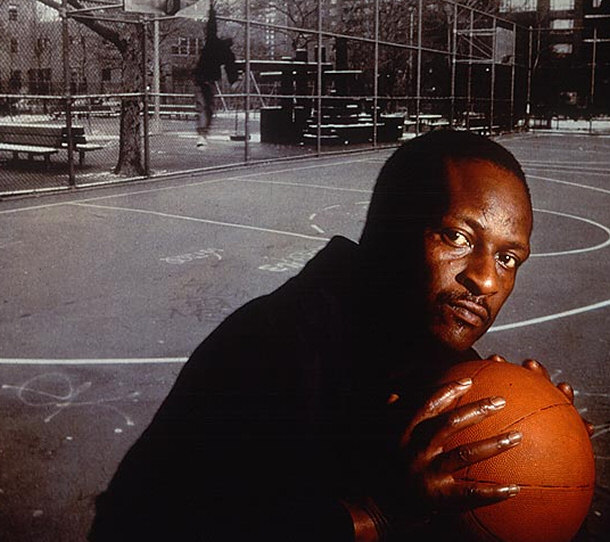
Noted for his athletic ability despite his undersized frame, Manigualt had a
game that, unlike many streetballers, was conducive with the NBA. Both a
spectacular athlete with a sound basketball IQ, he could have been the first
basketballer to truly come from the street and succeed in the NBA with little to
no formal training from elite high schools or colleges. Despite his talent and
promise, he never made it to the NBA. Ultimately, Manigualt fell victim to drug
addiction, as has been the case with a number of streetballers.
While Manigault’s story should have served as a warning to other young
streetballers to make the most of their opportunities and not take their natural
talent for granted, many fail to listen. Demetrius “Hook” Mitchell (otherwise
known as Waliy Abdur Rahim) and Ed “Booger” Smith are two other legendary
streetballers who succumbed to the pressures and obstacles of their environment.
Each battled with addictions, and saw their basketball skills and the once
promising careers fade away.
Personal
In basketball, at any level winning is about confidence. More than simply a
game of skill, basketball is a game of intimidation often through confidence in
oneself. However, often confidence can easily turn to arrogance and then to
complacency. It’s one thing to have made it to the NBA through hard work and
dedication to the improvement of both one’s game and personal evolution as an
individual. It’s a totally different story when it comes to being arrogant as a
streetballer, who simply expects their talents to carry them to the NBA and
flourish in the league. This is often the case with many streetballers and the
reason why they fail.
Numerous players have entered the league with tremendous hype from the media
and their community only to struggle to remain in the league, let alone realize
the potential they once appeared to possess.
|
Sebastian Telfair:
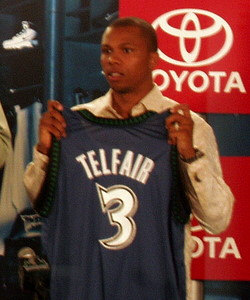
|
In 2004, Sebastian Telfair (2004 – present) entered the league under much
scrutiny and attention, given that he was the cousin of a Stephon “Starbury”
Marbury, one of the premier point-guards in the league at the time.
As detailed in the documentary ‘Through the Fire’ (2005) which chronicled
Telfair’s time leading up to the 2004 NBA Draft. Everyone was telling him that
he had talent to be something big in the league, which he came to believe and
made the risky decision to bypass college and jump straight to the NBA. While it
had seemed that he had all that it would take to become a superstar, after a
number of years in the league, he’s really only proved himself to be a
relatively consistent role-player at best.
Conclusion
In many ways streetball and the NBA are dramatically different but oddly the
same. Arguably there’s the same degree of talent required, though the specific
types of talent can differ greatly. This is what causes the divide amongst the
two games that ensure that neither style of play will ever or can ever
legitimately be considered better than the other.
Many NBA star players have taken time to compete in their off-time in
streetball tournaments, in order to expand and express their skills in both
arenas. This is why truly great basketball players, whether they come from and
are hyped by streetball or the NBA, aren’t truly great until they’ve proved
themselves at both levels of the game.
Basketball
8 Mediocre Players Who Made It Big (Financially) in the NBA
The Difference Between Streetball and The NBA
Aging in the NBA
Cool Sport Stuff
14 Interesting Facts About Mascots |